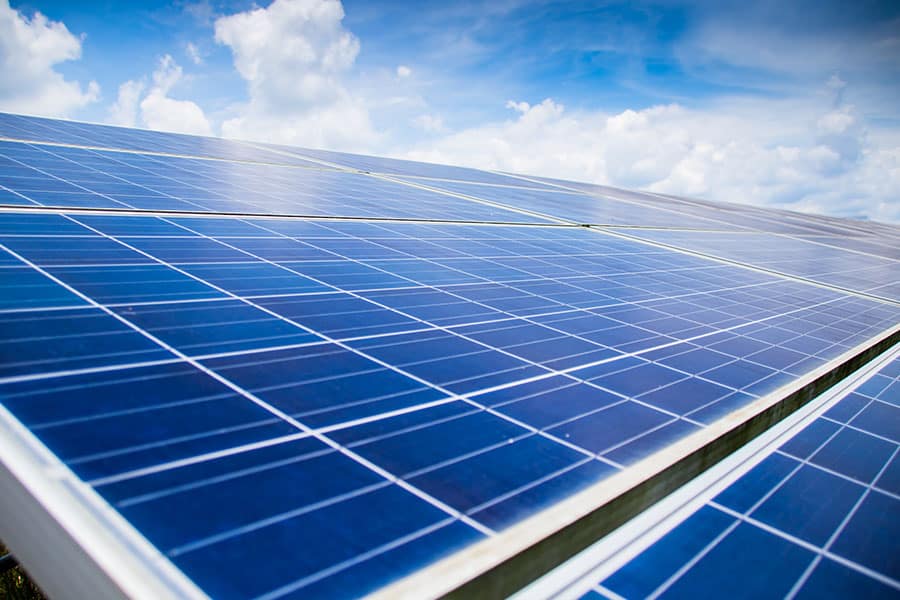As green construction continues to grow in popularity (and necessity), many builders are looking for simple ways to reduce their environmental impact.
From using local materials to incorporating energy-conscious design elements into new builds, creating more sustainable structures doesn’t have to be complicated. But one element of environmentally sustainable construction remains elusive: how to power existing buildings more sustainably, without committing unnecessary time and resources to on-site power generation.
One startup thinks it may have a solution.
Providing solar access
Arcadia, according to its product lead Jon McKay, was created to make it easier for consumers to access clean energy.
“Something like two-thirds of the buildings in the US can’t have access to rooftop solar voltaics due to a variety of external factors, like shade or space constraints,” McKay said. “Our founder, Kieran, was looking for a way to get people access to clean energy in a way that was more accessible to a broader audience.”
McKay joined Arcadia when it acquired his own startup, but he said the relationship was motivated by his interest in the energy grid.
“The more I learn about the grid, the more I become amazed every time I go into my room and turn on my light switch and the light comes on,” he said.
“There is just so much complexity involved and so many people,” McKay continued, “and so many devices at the end of the grid, like electric vehicle chargers and solar that’s pumping energy back into the grid. It’s really a marvel that it works as well as it does.”
How can the construction industry supply these complex energy needs with green power, especially in a time when America’s grid is being pushed to the limit?
McKay and the Arcadia team believe that community solar offers a promising solution—and that it has the platform to help support its use.
What is community solar?
“If you don’t want to get solar on your roof, there is an option in many states today where a developer can go out and build a large field of solar panels, which is generally a lot cheaper to do than building a smaller system on many houses,” McKay said.
Arcadia works to connect consumers to a community solar energy ecosystem so they can use green power without building infrastructure of their own. “We go out and find people who want to use community solar, and connect with their utility count so we can determine how much of the solar field we’ll need to allocate to them,” McKay said.
Once the connection is made, Arcadia facilitates communication between the solar developer, utility and client. “We become their billing agent, which means that instead of the user paying the utility for their energy and paying a community solar developer for the energy that they get from the solar farm, all of those charges are included in one bill. The end-user ends up getting energy for about 95% or 90% of the cost of what they would’ve paid if they didn’t have community solar. So they saved 5% to 10% and they got clean electricity, and they didn’t have to put up any upfront cost.”
Arcadia’s community solar infrastructure helps streamline the flow of information so energy companies can understand consumer usage patterns and anticipate where to build new solar resources. The company also provides a valuable resource for manufacturers of energy equipment, building software to improve the user experience as green energy consumption grows.
Easy route to sustainable energy
McKay believes that Arcadia’s technology could potentially make it easier for companies to integrate green energy into their practices without spending large amounts of money on building solar into their buildings themselves. “We started focusing pretty squarely on residential, but we got a lot of organic pull from the market from small- and medium-size businesses,” he said. “So that’s been really interesting and something that we’ve been accommodating with our product.”
What’s more, Arcadia’s community solar initiatives simplify businesses’ efforts to use greener energy sources. “If a company was in a situation where they wanted to make sure the building was powered by clean energy, but can’t for one reason or another build it themselves, they can sign up through Arcadia community solar and make sure that building has access to clean electricity on the grid. It also means that the building owner has cheaper electricity costs.”
By using the automated electrification processes Arcadia has created, businesses can lower their rates. “Any of these products, whether they’re solar panels or electric vehicles, electric vehicle chargers, heat pumps, batteries—any of these products—the end-user is going to be connecting their utility account to the product through our platform,” he said. “The product experience is going to be optimized; either the product is going to use electricity at the cleanest and cheapest time. It’s going to be more responsive to grid conditions and, potentially, they could also acquire community solar membership through the Arc platform.”
By using Arcadia’s technology, McKay said he hopes the company will make it easier for businesses interested in green construction to take advantage of the growing abundance of community solar options, while developing a more responsive approach to power use, “either signing up for community solar through Arcadia’s existing traditional community solar product or by installing electrification products that leverage Arc, our platform.”
With green building on the rise, startups like Arcadia can offer a unique approach to energy use for existing structures.












